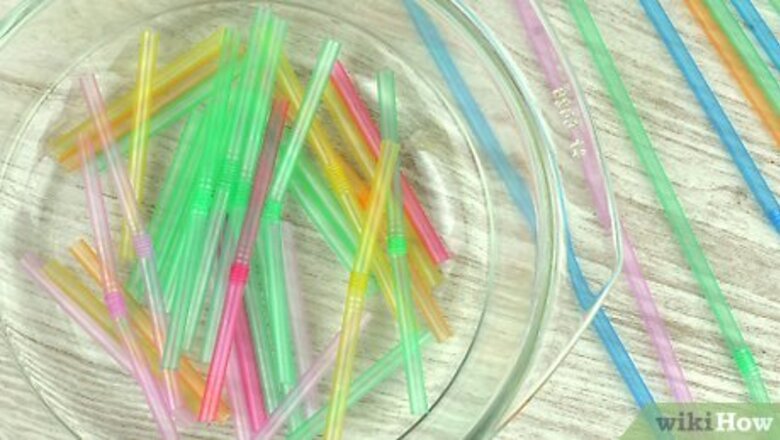
views
Melting Plastic in the Oven
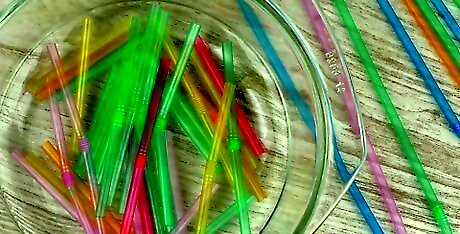
Place the plastic in a heat-proof container. In order to melt the plastic in the oven you need a surface that will fit in the oven and will hold the plastic, even when it is melted. Some options include a cheap sheet pan like this one on Amazon that you won’t use for food in the future or a ceramic tile. It is important to make sure that the plastic will not spill on the oven surfaces if it becomes totally liquid. If it does, it can be difficult to remove.
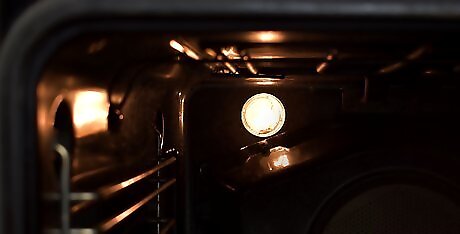
Preheat the oven to around 300 °F (149 °C). This temperature will gradually melt the plastic. However, you will need to be patient with the melting. It won’t take a blasting hot oven to melt most common plastics, such as Polypropylene, and you don't want it to be so hot that the plastic burns. In fact, if the heat is too high, the plastic will smoke and burn quickly.

Provide adequate ventilation. Even when melting plastic gradually, there are likely fumes released into the air. To avoid inhaling them, make sure your windows are open and air is moving through the area. If you have an exhaust fan, turn it on. Also consider wearing a respirator like these to avoid inhaling any fumes.
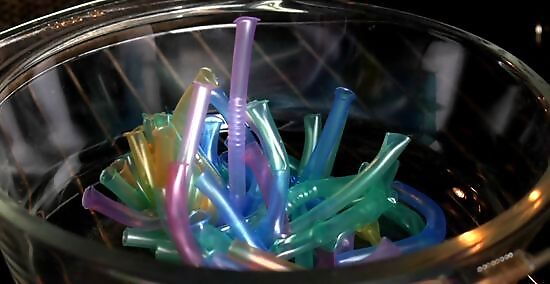
Watch your plastic as it melts in order to avoid burning. Turn on your oven light and watch it through the window in the door. This will help you avoid burning the plastic, as it should be taken out of the oven right when it has melted and before it smokes or burns.

Take the plastic out of the oven. Use oven mitts to carefully pick up the container that the plastic is in. While the plastic is still hot, you can pour it straight into a mold. If you want to cut it into a new shape later, let it cool in the melting container. Melted plastic can be put into a mold to shape it. You can use a pre-made heat resistant mold or make your own. If you want a particular shape, it may be best to make your own mold out of wood. Cooled plastic that has hardened can be cut and then sanded into whatever shape you like.
Melting Plastic with a Heat Gun
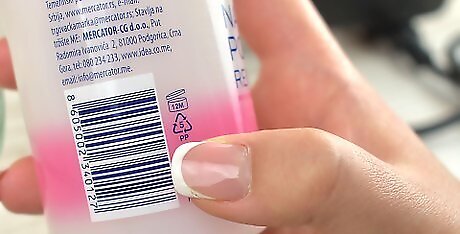
Determine if your plastic can be melted safely by looking at its number or characteristics. There are a wide variety of plastics out there and each type has different properties, including whether it can be melted. For example, look for a number 5 in a triangle on the plastic. This is type PP plastic, also known as Polypropylene, which can be heated and then will reconstitute when it cools. However, styrofoam, which can be identified by its light and airy consistency, will disintegrate when heated. Avoid melting this type of plastic.
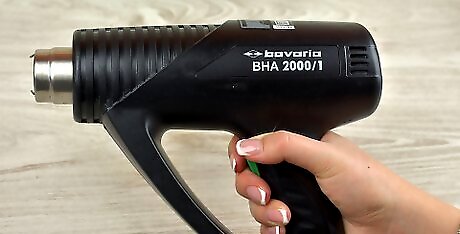
Purchase a heat gun. Heat guns are typically used to strip paint or soften putty but they can also be used to melt plastic. They are available at home improvement and hardware stores. They can also be purchased from online retailers. You can find a wide selection on Amazon here. Heat guns typically have low and high settings. The low setting heats to about 500 °F (260 °C) and the high setting heats to about 1,000 °F (538 °C). You may be able to rent a heat gun from your local home improvement store. However, they typically cost under 50 dollars (USD), so if you plan on using it several times it's probably best to buy one.
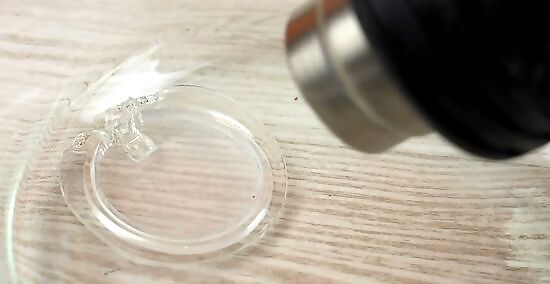
Test a small piece of the plastic to see if it melts or disintegrates. Cut off a 1 inch (2.5 cm) piece of the plastic and melt that first to test it. Heating it and then letting it cool will help you determine if it is thermoplastic or thermoset. Thermoplastic plastics can be heated and when they cool will become solid again. Thermoset plastics will be destroyed by heat and will not reconstitute in the same way after being heated repeatedly.
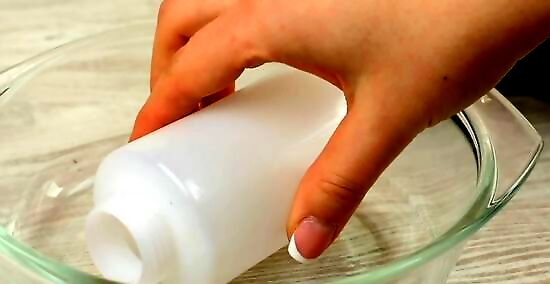
Place the plastic on a heat-proof surface outside and put on your protective equipment. Use a surface that can resist the heat put off by the heat gun. Some options include soldering blocks, metal sheeting, or concrete pieces, such as concrete blocks. Then put on your gloves and respirator. Having the plastic on a surface outside will minimize the risk of you inhaling fumes as it is melted. When heating plastic you can release hazardous fumes, such as dioxins. To avoid breathing them in, put on a respirator that is designed to filter fumes out.
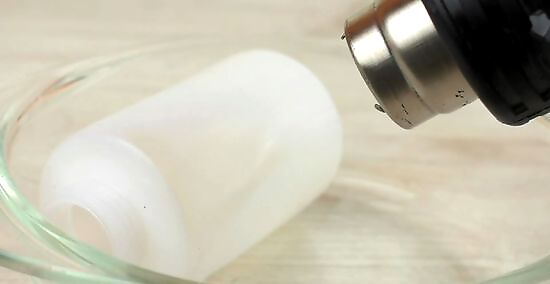
Use a sweeping motion to heat the plastic evenly. Plug in the heat gun, turn it on low, and begin to heat the plastic. Hold the tip of the heat gun at least a few inches away from the surface and move it continuously until the plastic is melted. If you only want to melt the plastic to smooth it out or bend it, then only a small amount of heat may be necessary. If you want to melt a piece of plastic completely, then you should repeatedly go over the surface of it with the heat gun.
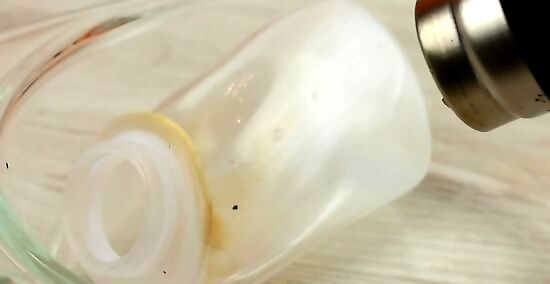
Melt the plastic gradually. Be patient and do not try to blast the plastic with a lot of direct heat really quickly. Instead, take some time to melt the plastic so that it doesn’t get overheated and burn. Go over the entire piece of plastic with sweeping motions. This will melt the whole piece of plastic as evenly as possible.
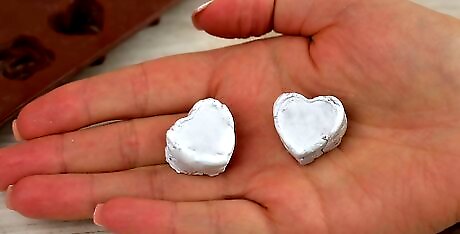
Put the melted plastic in a mold or let it cool. If you want to keep the plastic in its melted shape, such as if you plan on cutting or sanding it into a shape, let it cool before picking it up. If you want to mold the plastic, pour it into the mold while it is still hot. Remember not to pick up the plastic or container it is in without wearing gloves if it is still hot.
Melting Plastic with Chemicals
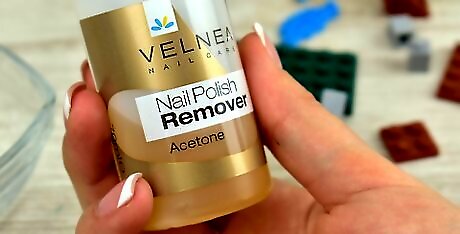
Purchase acetone to use for melting plastic. Acetone is a solvent that is often used for stripping paint or cleaning off nail polish but it can be used for melting some types of plastic. It is available at most hardware and beauty supply stores, as well as from online retailers like Amazon here. Get pure acetone, as it will work better than a mixed solvent solution for dissolving plastic.
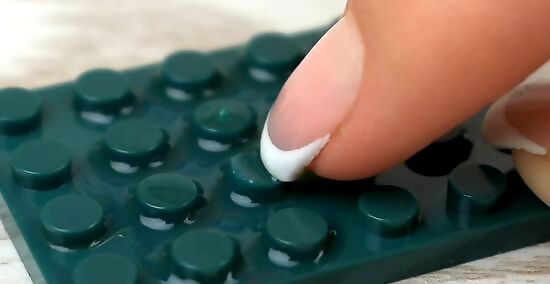
Determine if your plastic can be dissolved by acetone. Do a test by placing a small amount of acetone on the plastic you want to melt. If the acetone will melt your plastic, the melting will occur on contact. For instance, acetone works well to melt ABS plastic, which is a hard plastic that has many common applications. Acetone also instantly melts Styrofoam into a gummy, runny consistency.
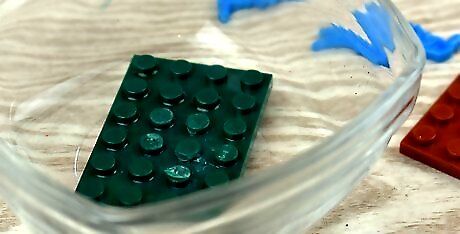
Put the plastic in a non-plastic container. Since you will be using a chemical that dissolves plastic, you want to make sure that you are using a container that won’t be dissolved as well. Consider using a metal or glass bowl.
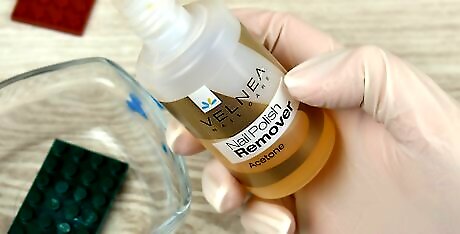
Use caution when handling the acetone. Acetone can be a skin irritant, can be painful and irritating if it gets in your eyes, and it is extremely flammable. Because of these characteristics, it's important to be cautious when using it. Wear gloves that are chemical resistant, eye protection that will block splashes, and don't use the acetone anywhere near an open flame or ignition source.
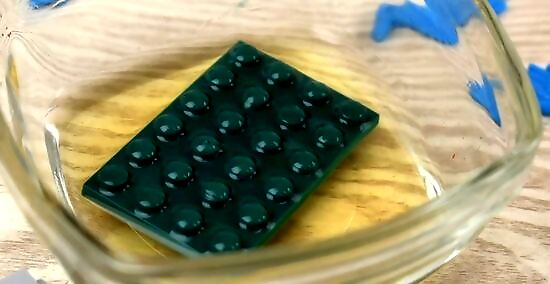
Cover the plastic with acetone. The amount of acetone you will need to use depends on the amount and type of plastic you are melting. Pour the acetone on until the plastic is covered and see if it melts immediately. If not, pour some more acetone on the plastic and stir the mixture until it is melted to your liking. If you are using the acetone to melt a small area of a piece of plastic, use a cotton swab to apply the acetone to the surface. This can be handy if you are melting hard ABS plastic together to fix a crack.
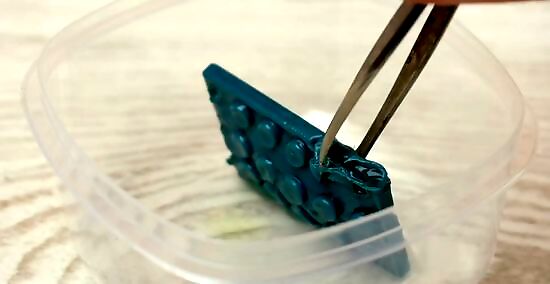
Remove the plastic from the acetone. If you have melted plastic in a lot of acetone, pull it out with tweezers. Then rinse the acetone off of the plastic with cold water or just wait for the acetone to evaporate. If you only used a little bit of acetone to melt small area on your plastic, you can either rinse that area with cool water or just let the acetone evaporate. While the plastic is still malleable, mold it into whatever shape you like.

















Comments
0 comment